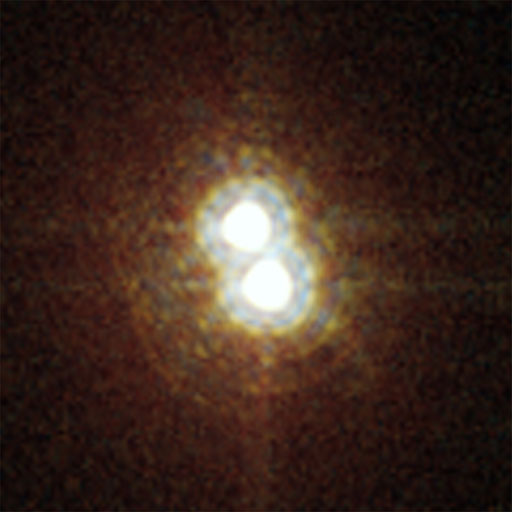ESA’s telescope discovers high-energy X-rays coming from massive star
 Paris, Feb 21: Integral, ESA’s (European Space Agency) powerful gamma-ray space telescope has made the first unmistakable discovery of high-energy X-rays coming from a rare massive star at Eta Carinae, which is at our ‘cosmic doorstep’.
Paris, Feb 21: Integral, ESA’s (European Space Agency) powerful gamma-ray space telescope has made the first unmistakable discovery of high-energy X-rays coming from a rare massive star at Eta Carinae, which is at our ‘cosmic doorstep’.
According to ESA, Eta Carinae is one of the most violent places in the galaxy, producing vast winds of electrically-charged particles colliding at speeds of thousands of kilometres per second.
Called as a hypergiant by astronomers, the object contains between 100 - 150 times the mass of the Sun and glows more brightly than four million Suns put together.
Astronomers know that it is not a single star, but a binary, with a second massive star orbiting the first.
It has long been suspected that such massive binary stars should give off high-energy X-rays, but until now, the instruments required for the observations were lacking.
Recently, Integral conclusively showed that Eta Carinae gives off high-energy X-rays, more or less in agreement with theoretical predictions.
"The intensity of the X-rays is a little lower than we expected, but given that this is the first-ever conclusive observation, that’s okay," said Jean-Christophe Leyder of the Institut - Astrophysique et de Geophysique, Universite de Liege, Belgium.
The high-energy X-rays come from a vast shockwave, set up and maintained between the two massive stars. The shockwave is produced when the two stars’ stellar winds collide, creating a system that astronomers term a colliding-wind binary.
This starlight is so fierce that the stellar winds can reach speeds of 1500 - 2000 km/s. With two massive stars in close proximity, as they are in the Eta Carinae system, the winds collide and set up fearsome shockwaves where temperatures reach several thousand million degrees Kelvin.
Electrically-charged particles called electrons get caught in the magnetic environment of the shockwaves, bouncing back and forth and being accelerated to huge energies.
When they finally burst out of the shockwave, they collide with low-frequency photons and give them more energy, creating the emission that Integral has seen.
Understanding this emission is important because astronomers believe that it lies at the heart of many diverse phenomena in the universe. Stellar winds have profound implications on the evolution of stars, the chemical evolution of the universe and as a source of energy in the galaxy. (ANI)